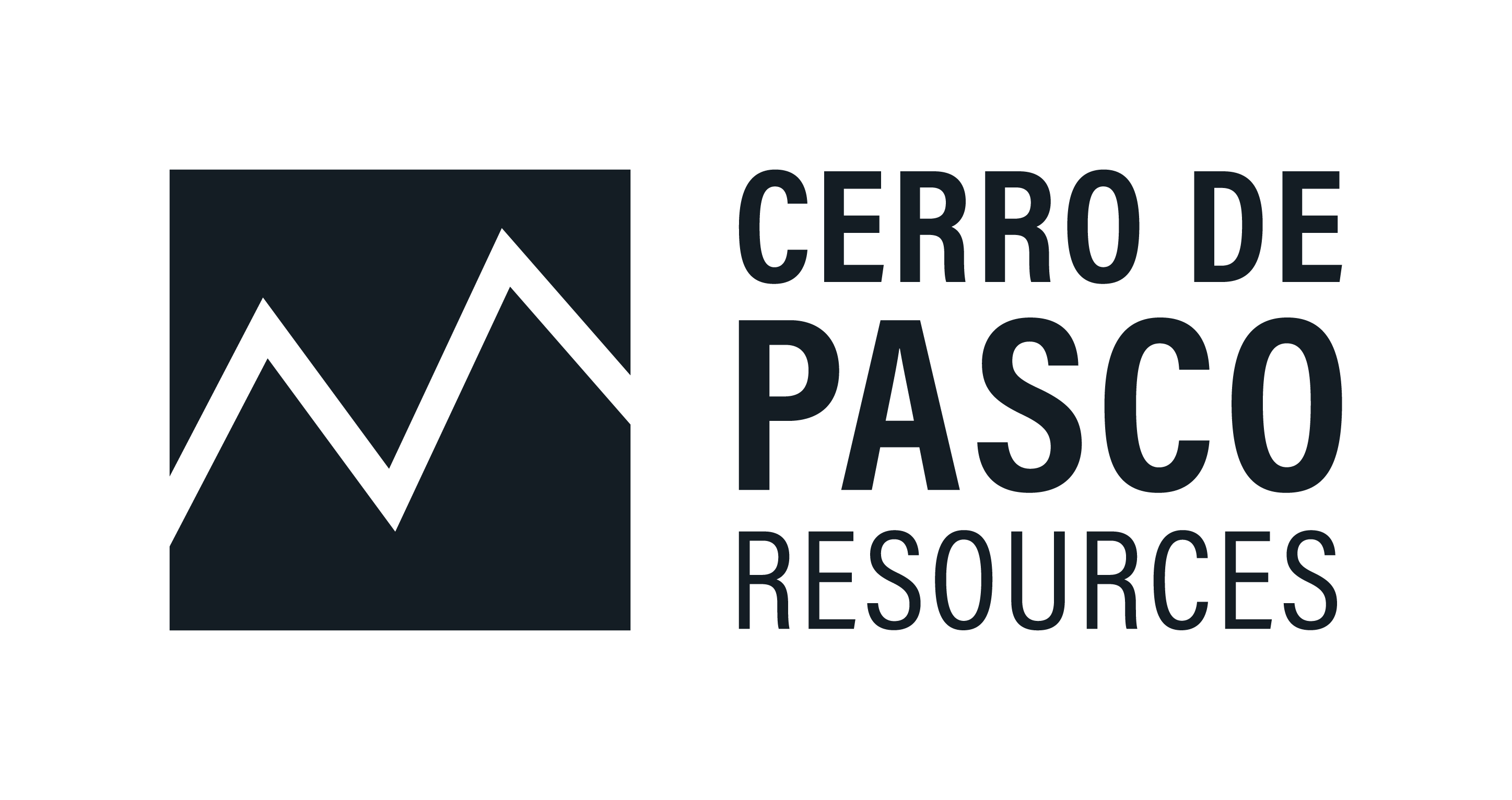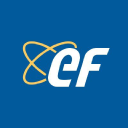The Art of Modern Mine Development: Earning Social License & Building Responsibly

Modern mining companies are earning social license through community partnerships, environmental stewardship, and strategic permitting. Learn the new playbook.
- The mining industry has shifted from pure extraction to community partnership, as high-profile failures prove that technical excellence alone no longer guarantees project success in today's complex operating environment.
- Proactive environmental responsibility from exploration onward creates competitive advantages through regulatory credibility and community trust.
- Genuine Indigenous and community partnerships with equity-sharing accelerate rather than delay projects.
- Strategic permitting through early stakeholder engagement dramatically reduces regulatory surprises.
- Local impact through jobs and community investment has become a core business requirement for social license.
Mining in a New Era
The global appetite for metals, particularly those essential to the energy transition, has never been stronger. Copper, nickel, lithium, and rare earth elements are the building blocks of a low-carbon future. Yet in today's mining environment, stellar drill results and robust economics are no longer sufficient to guarantee project success. Companies must now earn the right to build, through trust, transparency, and demonstrable commitments to environmental and social responsibility.
For investors seeking ethical, profitable, sustainable, and inclusive investment opportunities, this fundamental shift represents both risk and opportunity. The companies that master these new requirements don't just avoid the pitfalls that have destroyed shareholder value elsewhere, they create competitive advantages that translate directly into superior returns and reduced investment risk.
The shift reflects a harsh reality: community engagement, permitting efficiency, and sustainable project design have evolved from ESG checkboxes into critical de-risking strategies. The landscape is littered with cautionary tales of projects that stumbled despite their technical merits.
Oyu Tolgoi in Mongolia, one of the world's largest copper-gold deposits, endured years of delays due to strained government relations and permitting battles. Northern Dynasty Minerals' Pebble Project in Alaska lost major partners and faced outright permitting rejection over environmental and Indigenous concerns. Montem Resources watched its Tent Mountain coal project in Alberta collapse under community opposition, with the land ultimately reclassified to prevent future development. Rio Tinto's destruction of Juukan Gorge triggered executive resignations and industry-wide regulatory tightening. Most recently, First Quantum's Cobre Panamá mine was suspended by the Panamanian government following public backlash over concession terms - a stark reminder that even producing assets remain vulnerable to political and social risk.
These examples underscore a fundamental truth: the social and environmental footprint of a project carries equal weight to its technical fundamentals. As capital becomes more selective and stakeholders more empowered, success belongs to miners who build with communities, not merely near them.
From New Found Gold's community-first approach in Newfoundland to Sovereign Metals' conservation farming initiatives in Malawi, a new generation of mining companies is rewriting the development playbook. As Rio2's leadership notes, "Gone are the days where you build a story and hope someone buys you out. You have to demonstrate you can do it yourself."
The Art of Mine Development
Mine development in the 21st century extends far beyond engineering excellence and financial modeling. It's about building trust, fostering long-term partnerships, and creating shared value that extends beyond the mine gate. The most successful companies understand that sustainable development requires patience, cultural sensitivity, and genuine commitment to community partnership.
Today's successful developers understand that sustainable mining operations require three fundamental pillars:
- Environmental Responsibility: Proactive environmental stewardship that begins during exploration and continues through closure, backed by transparent data and community accountability. This includes comprehensive baseline studies, real-time monitoring, and innovative approaches to waste management and site remediation.
- Community Engagement and Social License: Genuine partnerships with local communities, Indigenous groups, and stakeholders that go beyond consultation to create lasting economic and social benefits. This involves early engagement, shared decision-making, and tangible local benefits.
- Strategic Permitting and Planning: Collaborative regulatory processes that treat permitting as a dialogue rather than a hurdle, with baseline studies and community input informing project design from the outset. This approach recognizes that regulatory approval and community acceptance are interconnected.
This holistic approach recognizes that mining projects are not merely industrial endeavors - they are long-term community partnerships that must deliver value for all stakeholders. The companies that master this consistently outperform those that treat social and environmental considerations as afterthoughts.
Pillar One: Environmental Responsibility from Day One
The fundamental shift toward proactive environmental stewardship represents more than regulatory compliance. It's a strategic repositioning that can determine project viability. Traditional mining approaches treated environmental considerations as backend concerns, leading to costly remediation, community opposition, and regulatory delays. Today's successful developers understand that environmental responsibility must be embedded in project DNA from the earliest exploration phases, fundamentally altering how projects are conceived, designed, and executed.
Early Monitoring Strategy
Early monitoring creates competitive advantages through data transparency and community trust. The most sophisticated companies recognize that environmental credibility cannot be retrofitted - it must be built from day one. New Found Gold exemplifies this approach at their Queensway project. VP of Sustainability Jared Saunders emphasizes:
"Mines can actually come in, if they're designed and done properly, [and] achieve the goal of extracting the resource with the minimal amount of impact and not leaving a long-term legacy issue behind."
This philosophy drives concrete action: "We were the first exploration company in Newfoundland & Labrador to put in real-time water quality stations."
This early monitoring strategy serves multiple strategic purposes. First, it demonstrates environmental commitment before regulators require it, building credibility with permitting authorities. Second, it provides baseline data that informs project design decisions, potentially avoiding costly modifications later. Third, it signals transparency to communities, reducing skepticism about environmental impacts. The comprehensive approach - covering surface water, sediment sampling, vegetation, wetlands, bird and wildlife populations - creates an environmental foundation that supports informed decision-making throughout the project lifecycle.
Remediation as Business Model
Environmental remediation as value creation represents an emerging business model that addresses legacy issues while generating returns. Rather than viewing environmental responsibility as a cost center, innovative companies are discovering profit opportunities in cleanup and restoration. Cerro de Pasco Resources demonstrates this approach by targeting decades of legacy contamination in Peru. CEO Guy Goulet explains:
"These tailings and these stockpiles produce acid water… and are right in the middle of a community of 67,000 people… We're going to correct the situation."
This remediation-focused model addresses a critical industry challenge: the vast environmental legacy of historical mining operations. As Cerro de Pasco's Executive Chairman Steven Zadka notes:
"You wouldn't need to go and open a new mine, for years, if you just re-mined all of the tailings in the world."
This perspective transforms environmental liability into business opportunity, potentially offering lower-risk development pathways while addressing community health concerns.
Integrated Programming
Integrated environmental and social programming creates multiplicative benefits that extend beyond traditional mitigation. The most sophisticated approaches recognize that environmental and social considerations are interconnected, creating opportunities for programs that simultaneously address multiple stakeholder concerns. Sovereign Metals' conservation farming initiatives in Malawi demonstrate this integration, helping local communities improve agricultural productivity while protecting soil and water resources. The program "teaches, promotes and monitors responsible land stewardship based on the principles of on-time, to standard, no wastage, with joy."
This integrated approach offers several strategic advantages. Environmental programs that create economic benefits for communities build stronger social license than purely mitigation-focused efforts. They demonstrate genuine commitment to community wellbeing rather than mere compliance. They can also create positive feedback loops where community members become environmental advocates for the project.
Trust Rebuilding
Historical relationship repair through environmental commitment can unlock previously inaccessible opportunities. Mining companies increasingly recognize that environmental responsibility can serve as a bridge to rebuild trust damaged by past industry practices. Energy Fuels' approach with the Navajo Nation illustrates this potential:
"We now have, through that agreement, the opportunity to help with the cleanup on the Navajo Nation in the future."
This commitment to environmental remediation addresses past mining impacts while establishing frameworks for responsible future development.
The strategic value of this approach extends beyond individual projects. Companies that demonstrate genuine environmental stewardship in historically impacted regions can differentiate themselves from industry peers, potentially gaining access to opportunities that would be politically or socially impossible for companies with weaker environmental credentials.
Pillar Two: Social License to Operate - More Than a Checkbox
Social license represents the most complex and dynamic aspect of modern mine development. An intangible asset that can make or break billion-dollar projects regardless of their technical merits. Unlike regulatory permits, social license cannot be purchased, litigated, or imposed; it must be earned through sustained relationship building, tangible value creation, and genuine respect for community interests. The most successful companies recognize that social license is not a destination but an ongoing process that requires continuous investment and authentic commitment.
Local Workforce Integration
Local workforce integration creates economic multiplier effects that transform project economics and community relationships. The strategic value of local hiring extends far beyond public relations - it fundamentally alters project risk profiles and community dynamics. New Found Gold's approach demonstrates this principle:
"Over 90% of our workforce is from the province of Newfoundland & Labrador. Over 60% are within one hour's drive of the worksite."
This local integration strategy creates several competitive advantages.
First, local workers become project advocates within their communities, providing organic communication channels and credibility that external messaging cannot achieve. Second, local employment creates economic dependency that aligns community interests with project success. Third, reduced housing and logistics costs for workforce accommodation can significantly improve project economics. The company's communication strategy reinforces this local connection:
"We send postcards to every house within a 50km radius for town halls… and we answer pre-submitted questions to show people they're heard."
Indigenous Partnerships
Indigenous partnerships require genuine equity sharing and decision-making authority, not consultation theater. The evolution from consultation to partnership represents perhaps the most significant shift in modern mining practice. Traditional approaches treated Indigenous engagement as a regulatory requirement to be managed and minimized. Today's leaders recognize that meaningful Indigenous partnerships can provide competitive advantages through reduced political risk, enhanced regulatory support, and access to traditional ecological knowledge.
Canada Nickel has secured landmark memorandums of understanding and equity investments with First Nations communities, including what the company describes as an out-of-the-box First Nations investment they were closing with Taykwa Tagamou Nation (TTN). These agreements create genuine partnership models rather than mere consultation processes.
This financial integration creates aligned interests that transcend traditional consultation processes. The results demonstrate the strategic value:
"We've got great First Nation community support… those are the projects that can quickly get done."
Gladiator Metals articulates this evolution through their "engagement to wedding" metaphor:
"We already have our first agreement with the Kwanlin Dün [First Nation]... a capacity funding agreement. You can akin it to getting engaged - we're now organizing the wedding."
This long-term relationship building approach recognizes that meaningful partnerships require time, resources, and mutual commitment. The company's strategic calculus demonstrates sophisticated understanding of modern mining economics: "I would much rather engage in positive community engagement and acceptance and social license than be remote and have overbearing capital requirements."
This recognition that social license can reduce capital requirements and operational risks represents a fundamental shift in project evaluation criteria.
Voluntary Agreements
Voluntary agreements that exceed legal requirements create differentiation and competitive advantages. The most successful companies proactively establish partnerships that go beyond legal obligations, creating goodwill that can prove invaluable during challenging periods. Energy Fuels' approach with the Navajo Nation illustrates this strategic thinking, as the company acknowledges they had no legal obligation to establish the agreement beyond wanting to avoid confrontational relationships with the community.
This voluntary commitment to partnership building generated significant returns:
"We now have significant, huge support from the Navajo Nation. It really turned out a win-win for both groups."
The strategic value extends beyond individual project benefits - companies that demonstrate respect for Indigenous sovereignty and community interests can differentiate themselves in increasingly competitive landscapes.
Community Development Programming
Community development programming that addresses fundamental needs creates lasting social license that survives economic cycles. The most sophisticated approaches recognize that temporary economic benefits alone cannot sustain social license through inevitable commodity downturns and operational challenges. Programs that address fundamental community needs create resilient relationships that can weather difficult periods.
Sovereign Metals' conservation farming program in Malawi demonstrates this approach: "The success of our Conservation Farming Program near Kasiya demonstrates a scalable solution to food insecurity and otherwise perpetual land degradation in Malawi." The dramatic results - "The top farmer harvested 12.8 tonnes/ha, a ten-times (10x) increase in crops" - create lasting community benefits independent of mining activities. "We've adopted Conservation Farming as one of the cornerstones of our livelihood improvement initiatives for the Kasiya Project."
Economic Revitalization
Economic revitalization in historically mining-dependent communities can generate extraordinary social license when authentically executed. Communities with historical mining experience often possess sophisticated understanding of industry promises versus delivery. Successful engagement in these contexts requires acknowledgment of past failures and concrete demonstration of different approaches. Cerro de Pasco Resources addresses this challenge directly:
"We're creating wealth back in the community of Cerro de Pasco… that mine used to employ 7,000 people. Today, it barely employs 500."
The community response - "The community wants this project to move forward as soon as possible" - reflects recognition that the company's approach addresses historical grievances while creating economic opportunities. This enthusiastic support in a historically mining-impacted community demonstrates the power of authentic engagement that acknowledges past failures while offering genuine alternatives.
Pillar Three: Permitting as a Collaborative Process
The transformation of permitting from adversarial process to collaborative dialogue represents one of the most significant shifts in modern mining development. Traditional approaches treated permitting as a technical hurdle to be overcome through legal compliance and regulatory expertise. Today's most successful companies recognize that permitting success depends as much on social and political factors as technical adequacy. The most sophisticated developers treat permitting as an opportunity to demonstrate commitment to responsible development while building trust with regulators, communities, and stakeholders.
Pre-Submission Engagement
Pre-submission stakeholder engagement fundamentally alters permitting dynamics and success rates. The conventional approach of developing projects in isolation before engaging stakeholders during formal permitting processes has proven costly and unreliable. Companies that invest in comprehensive stakeholder engagement before submission consistently experience smoother regulatory processes, fewer unexpected objections, and faster approval timelines.
New Found Gold exemplifies this strategic approach: "Before these permits are submitted, myself or my team go and have conversations with all these key stakeholders." This proactive engagement serves multiple purposes. First, it identifies potential concerns before they become formal objections, allowing project modifications that address issues early. Second, it demonstrates respect for stakeholder input, building goodwill that can prove valuable during challenging periods. Third, it ensures that formal submissions reflect stakeholder input, reducing the likelihood of fundamental design changes during review.
Baseline Data Strategy
Comprehensive baseline data collection before project definition creates flexibility and reduces regulatory risk. The sequence of baseline studies relative to project design has profound implications for permitting success. Companies that collect comprehensive environmental and social data before finalizing project parameters can incorporate findings into design decisions, avoiding costly modifications later. This approach also demonstrates environmental commitment to regulators and communities.
The systematic approach includes multiple years of environmental monitoring across all relevant parameters, including water quality, wildlife populations, vegetation, archaeological resources, and socioeconomic conditions. This comprehensive foundation allows informed decision-making about project design while maintaining transparent communication with regulators and communities.
Stakeholder Integration
Stakeholder feedback integration during development reduces formal permitting conflicts and delays. The most successful companies treat permitting as an iterative process that begins during early development phases rather than a discrete event after project definition. This approach allows continuous refinement of project design based on stakeholder input, regulatory guidance, and environmental findings.
Canada Nickel demonstrates this collaborative approach through their permitting experience: "We've done very well through the permitting process. It has not been a bottleneck for us at all." When they filed their environmental impact statement, "We got 200 submissions, but there wasn't anything unexpected." This lack of surprises during formal review reflects comprehensive pre-submission consultation and transparent communication with stakeholders.
The strategic value of this approach extends beyond individual project benefits. Regulatory authorities increasingly prefer applicants who demonstrate genuine stakeholder engagement and environmental stewardship. Companies with strong track records of collaborative permitting often receive more favorable treatment from regulators, creating competitive advantages for future projects.
Adaptive Design
Adaptive project design based on permitting feedback can improve project outcomes while building stakeholder confidence. The most sophisticated companies treat permitting challenges as opportunities for project improvement rather than obstacles to overcome. This mindset shift can transform potentially adversarial relationships into collaborative problem-solving partnerships.
Rio2's experience illustrates both the challenges and opportunities of adaptive permitting approaches. The company acknowledges past difficulties: "We clawed back from the disaster we had with our EIA. We're clawing our way up… waving our hands and saying, we are real." This honest assessment of permitting challenges led to significant project redesign and improved stakeholder engagement.
The company's adaptive approach includes continuous project refinement based on regulatory and community feedback.
"We've designed [the processing area] to cater for our expansion… large enough for three trains of leach tanks."
This forward-thinking approach demonstrates how permitting feedback can improve project design rather than merely constrain it.
Infrastructure Commitments
Regional infrastructure development commitments can transform permitting dynamics and community relationships. The most strategic companies recognize that mining projects can serve broader community infrastructure needs, creating opportunities for enhanced social license and regulatory support. These commitments demonstrate long-term regional commitment while addressing community development priorities.
Rio2's commitment extends beyond immediate project needs:
"We'll be coming up with a [desalination] solution that will cater for other users in the area as well."
This recognition that mining projects can contribute to regional infrastructure development represents sophisticated understanding of social license requirements and can create positive feedback loops where communities become project advocates.
This approach requires careful balance between commercial viability and community benefit, but successful implementation can create lasting competitive advantages through enhanced community relationships and regulatory support.
Measuring Impact: Jobs, Education & Long-Term Legacy
The most successful mining companies understand that their social license depends on delivering tangible, measurable benefits to host communities. Local employment, training programs, educational support, and business development have become core project deliverables rather than peripheral considerations.
New Found Gold's employment statistics demonstrate comprehensive local integration. The company employs 174 people directly and through contractors, with 94.3% from Newfoundland and Labrador and 64.3% from central Newfoundland specifically. This local workforce development creates immediate economic benefits while building local capacity for the mining sector.
Beyond direct employment, the company provides financial and volunteer support to local charities, fire departments, sporting events, educational institutions, and community gatherings. These investments concentrate economic benefits in the Gander region while building lasting community relationships. The company's approach recognizes that social license requires ongoing investment in community wellbeing.
Sovereign Metals' conservation farming program demonstrates how mining companies can address fundamental community needs while building social license. The dramatic improvements in agricultural productivity, with top farmers achieving ten-fold increases in crop yields, create lasting benefits that extend far beyond the mine lifecycle. These programs position the company as a development partner rather than merely a resource extractor.
Cerro de Pasco Resources shows how mining can revitalize struggling regional economies. The company's commitment to recreating the employment opportunities that historically supported 7,000 people addresses community economic development needs while building support for the project. This approach recognizes that mining companies can serve as catalysts for broader regional development.
The shift toward measurable community impact reflects growing recognition that mining companies must demonstrate value beyond resource extraction. Communities increasingly expect mining companies to serve as long-term development partners which requires sophisticated approaches to community engagement and sustained investment in local capacity building.
Lessons & Takeaways for the Industry
The experiences of these pioneering companies reveal several key principles that are reshaping modern mine development:
- Sustainability and social license represent competitive advantages, not regulatory burdens: Companies that embrace environmental and social responsibility consistently outperform those that treat these factors as constraints. Proactive engagement reduces project risks, streamlines permitting, and improves long-term operational stability. As demonstrated by Canada Nickel's smooth permitting experience and New Found Gold's community support, early investment in stakeholder relationships pays dividends throughout the project lifecycle.
- Genuine collaboration, not just consultation, defines the new standard: Meaningful partnerships with communities, Indigenous groups, and stakeholders require shared decision-making and benefit-sharing. Gladiator Metals' "engagement to wedding" approach and Energy Fuels' voluntary agreements with the Navajo Nation demonstrate that authentic partnerships require time, resources, and mutual commitment.
- Environmental stewardship must be proactive, not reactive: Companies like New Found Gold and Sovereign Metals show that environmental responsibility begins during exploration and continues through closure. This approach treats environmental stewardship as a competitive advantage rather than a compliance burden, creating opportunities for innovation and community partnership.
- Local integration creates lasting value: The most successful companies prioritize local hiring, procurement, and community investment. New Found Gold's 90%+ local workforce and Sovereign Metals' agricultural programs demonstrate how mining companies can become integral parts of regional development rather than external extractors.
- Permitting success requires early and ongoing stakeholder engagement: Companies that begin community consultation during exploration phases and maintain transparent communication throughout development consistently experience smoother regulatory processes. This approach treats permitting as a collaborative process rather than a regulatory hurdle.
- Long-term thinking produces better outcomes than short-term optimization: Mining projects that prioritize immediate economic returns over community relationships and environmental stewardship often face costly delays, opposition, and operational challenges. Sustainable development requires patient capital and genuine commitment to community partnership.
A Blueprint for the Future of Mining
The companies profiled in this analysis represent a fundamental shift in mining industry culture, from an extractive mentality focused on maximizing short-term returns to a collaborative approach that prioritizes long-term sustainability and community partnership. This transformation reflects not just changing social expectations, but also the practical reality that sustainable operations require community support and environmental stewardship to generate consistent returns.
For investors whose remit focuses on ethical, profitable, sustainable and inclusive companies, the mining companies highlighted in this analysis deserve consideration. These companies demonstrate that environmental responsibility, community engagement, and business success are complementary rather than competing objectives.
These practices may seem unimportant compared to traditional mining investment criteria like resource size, grade, or metallurgy, but they represent the critical difference between investment success and failure in today's market. The companies that embrace comprehensive stakeholder engagement, proactive environmental stewardship, and genuine community partnership don't just avoid the value destruction that has plagued industry peers - they create competitive advantages that translate into superior returns, reduced regulatory risk, and enhanced operational stability.
This type of behavior sets an example for the rest of the industry and makes these companies genuinely investible. While peers struggle with community opposition, permitting delays, and regulatory challenges, these companies have built sustainable frameworks for development that reduce investment risk while enhancing long-term value creation.
The path forward requires mining companies to embrace their role as long-term community partners and environmental stewards. For investors, it requires recognizing that this evolution represents opportunity rather than constraint. Companies that conduct business with transparency, accountability, and genuine commitment to shared prosperity consistently outperform those that treat social and environmental considerations as compliance burdens.
The investment opportunity is clear: in an era of unprecedented global resource demand, the most valuable asset a mining company can possess may not be the minerals in the ground, but the trust of the communities above it. The companies that master the art of mine development, through genuine partnership, environmental stewardship, and transparent communication, represent the future of profitable, sustainable, and ethical mining investment.
Analyst's Notes




Subscribe to Our Channel
Stay Informed



















































































